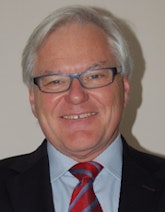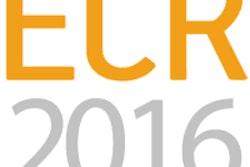
Globalization of diagnostic radiology is creating opportunities, but it is also posing major challenges and threats, according to a discussion on teleradiology at last week's Management in Radiology (MIR) congress held in Bologna, Italy.
"The major drawback of teleradiology is that there is no direct contact between the radiologist and the physician requesting the examination, the patient, or the technologist," said Dr. Elisabeth Schouman-Claeys, professor and head of radiology at Bichat Hospital in Paris.
 Don't let radiology become an autistic phantom activity on a distant planet, said Dr. Elisabeth Schouman-Claeys.
Don't let radiology become an autistic phantom activity on a distant planet, said Dr. Elisabeth Schouman-Claeys."Imaging a patient in a clinical context is a complex process which starts with the validation of the order, with a direct conversation with the requester and/or the patient if required, or even an examination of the patient," she said. "Exchanges with the technologists may follow, and the activity is rounded off by communicating results, including explanations of the meaning of the report or counsel as to therapy planning."
Thus, the value of radiology is much more than simply writing a report, and if a teleradiologist is reduced to simple remote reading, this may mislead managers keen to identify opportunities for short-term cost savings, but in the end causing loss of quality, she explained.
"Radiology is a high-tech profession, and radiologists -- who continuously face technological and organizational changes -- are open to new approaches, worldwide," Schouman-Claeys noted, adding that there are many factors pushing radiology toward sharing data and knowledge:
- The maturity of technology
- A culture of sharing scientific findings encouraged by the Internet, modern communication, professional meetings, and networks
- The growing awareness that radiologists cannot cover everything and should do only what they are capable of doing, taking into account the needs for subspecialty competencies and immediate results seven days a week
- The shortage of radiologists in many regions combined with a reduced willingness to dedicate extra time to heavy workloads and frequent night and weekend coverage
These comments appear to lead directly to teleradiology, but this approach does not equate to globalization, she continued. Whereas illness and medical images may be universal, patients are not, and peers are not either, and it is essential to keep radiology embedded within the patient pathway and not to convert it into an "autistic phantom activity on a distant planet."
In her opinion, globalization -- or Europeanization -- therefore only has a place where there is no other solution at the local, regional, or national levels, while ensuring that complete operational structures at the point of the patient contact are maintained.
The bigger picture
Globalization as a general phenomenon in the manufacturing and services business is beneficial in the long run, and it helps eradicate inequalities, after creating short-term challenges for the industry and workforce in developed countries, according to some economists. Healthcare, including radiology, is not escaping these issues, said Dr. Jan Schillebeeckx, a radiologist from Knokke, Belgium, and a member of the European Affairs subcommittee and the Management in Radiology section of the European Society of Radiology (ESR).
 Dr. Jan Schillebeeckx
Dr. Jan SchillebeeckxAlong with Schouman-Claeys, he referred mostly to a development that might better be termed as "Europeanization" -- i.e., transborder activities within the continent, based on the limitations of practicing a regulated profession limited to EU citizens.
In theory, the technical platform for Europeanization is laid out: In most European countries, radiology is 100% digitized, and there are standards and formats such as DICOM and HL7. However, radiology is much more than a collection of modalities and software applications, he said.
"It is about patients and quality of care," Schillebeeckx noted, stressing that radiology cannot, and must not, become a commodity. "On the other hand, it is a fundamental right of patients to receive healthcare services. In regions where access to care is insufficient, patients must be given the opportunity to seek those services elsewhere -- by moving physically, or by teleradiology."
Europeanization is still in its infancy, and unlike in the U.S., e-health, managed services, and teleradiology are not yet practiced widely at a cross-border level, he said. The number of commercial activities is still limited, but most of these activities take place at a local level and under control of the local authorities. A good example is stroke management in a multitude of EU member states.
The European Commission's viewpoint
"The European Commission supports cross-border activities through funding of large-scale pilots covering many EU countries -- such as 'Renewing Health,' " explained Céline Deswarte, policy officer of the Health and Well-being Unit DG Connect of the European Commission.
 Céline Deswarte, from the European Commission.
Céline Deswarte, from the European Commission.The major barrier to Europeanization is guaranteeing quality of care, and as an enabler, qualification should be harmonized across EU member countries; the effort of the ESR to encourage radiologists to apply for the European Diploma of Radiology is a good example of how this can be achieved, Schillebeeckx said. Teleservices should not downgrade professional quality, commented Schouman-Claeys, and quality should be an essential ingredient of teleradiology contracts -- by way of describing requirements and procedures.
Quality is only one of the major barriers, and in Europe there are many cultural and linguistic differences, Schillebeeckx pointed out. English may be the dominant language, but because healthcare remains highly personal, it is critical that both referrers and patients understand perfectly the radiological report in their own language in order to avoid medical errors. Ethical considerations also play a role, he noted.
In addition, there is a gap between the conventional culture of providing medicine and the approach to medicine as a business; another necessity is to have sufficient guarantees regarding data privacy, and this includes the question where patient data is hosted, Schouman-Claeys said.
"The main benefit is clearly that patients can have access to services in a timely manner under the premise that quality is guaranteed and that services cannot be delivered locally," Schillebeeckx said; the challenge being to provide timely services in some regions with a shortage of healthcare professionals.
"It is important to understand that the European Commission is encouraging e-health and telemedical services," he said. "In their own interest, radiologists should seek involvement in this process. Already, the ESR has been exerting influence in the e-health stakeholders group of the EU. As an example, teleradiology has been recognized as a medical act as a basis for reimbursement and patient consent has been embedded in the proposals. We ought to continue contributing our views to the working groups."
Teleradiology can help solve difficulties in countries with critical situations and -- if intelligently designed -- can push forward the creation of a highly skilled community, Schouman-Claeys said. However, the first step should be to encourage consolidation and pooling of resources, locally and at a regional level, combined to ensure a high standard of teleradiology solutions not restricted to remote reading.

















